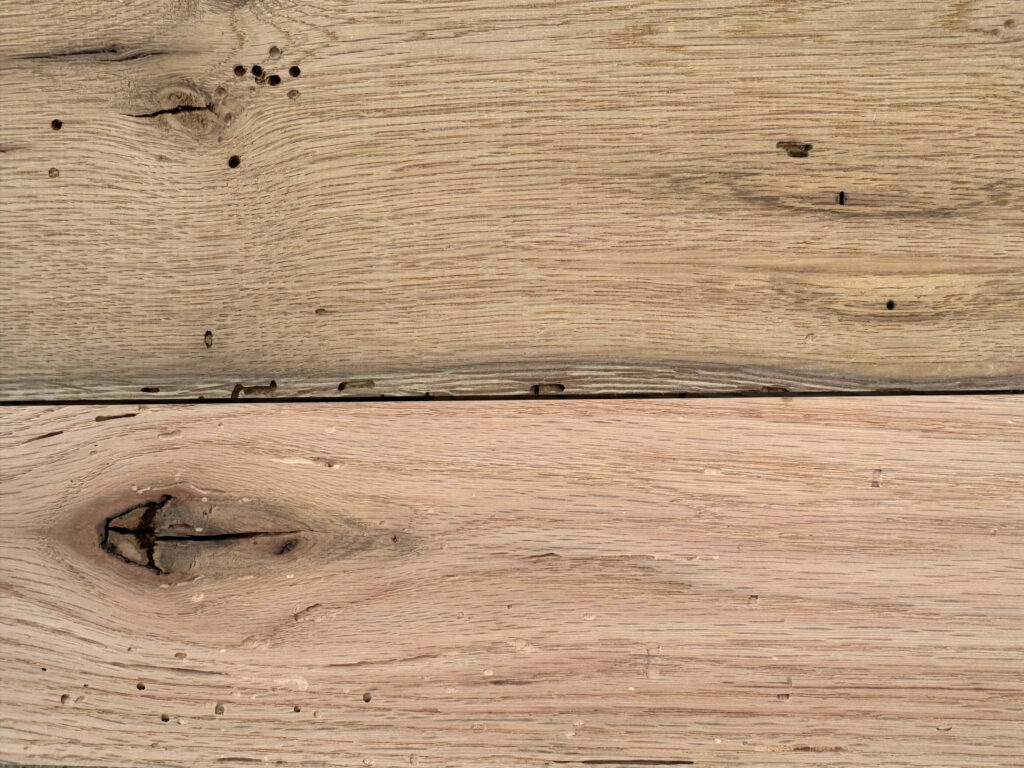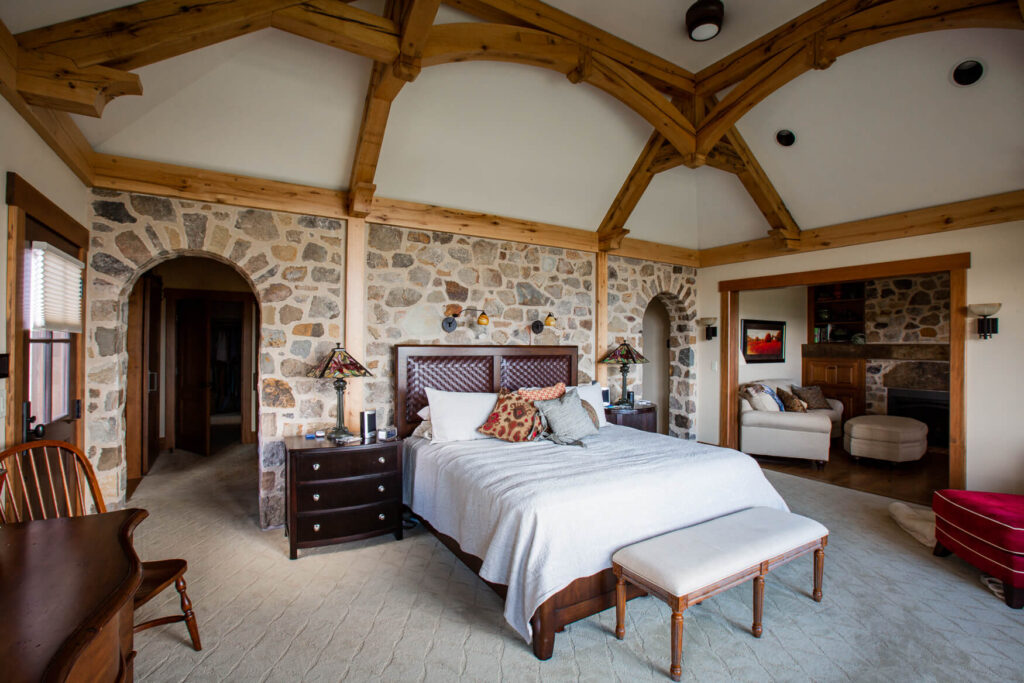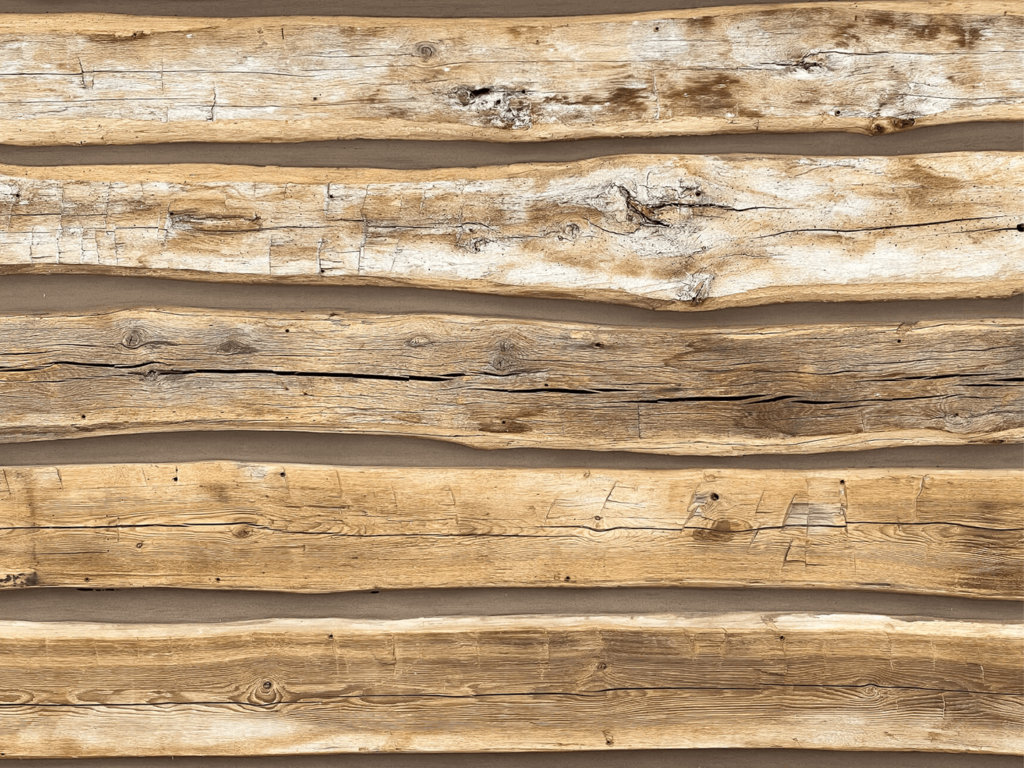Nothing elevates your home like a reclaimed hardwood floor. When it comes to what wood to use, many people turn to white oak. However, red oak can be a great alternative for a similar look and many of the same characteristics. By seeing the differences between red oak vs white oak, you’ll be able to pick the best wood for your next project or space.
White Oak Overview
White oak is a term used to describe several species of trees, including white oak, bur oak, and chinkapin. These trees are mostly found in the Eastern United States and Canada. They are not as abundant in nature, making white oak a more expensive material option.
Some of the common uses of white oak are hardwood floors, trim, furniture, cabinetry, boats, and wine and whiskey barrels. Oak is a solid choice for most home projects because of its hardness. It measures 1,350 on the Janka hardness scale, which calculates the force needed to embed a steel ball in a piece of wood.
Benefits & Limitations Of White Oak
1. Rot Resistant
The pores of white oak lumber are plugged with tyloses, an overgrowth that clogs vessels in plants. These allow the oak tree to cut off any infected limbs and prevent pathogens from spreading. Tyloses help the wood resist moisture and decay, decreasing its risk of water damage. This makes white oak perfect for outdoor uses!
2. Durable
White oak is more durable than red oak because it is less porous. This strength makes it ideal for intense industries like boatbuilding, barrels, and outdoor furniture. And its hardness level means it can handle high-traffic areas in your home.
3. Easy to Work With
Whether you’re working with your hands or power tools, white oak wood is easy to handle and is great for lots of projects!
4. Harder to Find
Unfortunately, white oak tends to be harder to find for the simple reason that there are less white oak trees growing in the region. You usually have to go to a wood retailer or local sawmill to get your hands on some. This makes it a pricier option, especially for large projects.
5. Less Even Stain
While its plugged pores are a benefit for durability, they are a disadvantage in staining. The non-porous wood can be harder to stain evenly. Overall, however, it is still considered easy to stain.
Red Oak Overview
Similar to white oak, red oak trees are mostly found in the Northeastern United States and Southeastern Canada. They can be a variety of species, including Northern red oak or black oak. This type of wood is more readily available due to the greater supply of trees.
It is often used in cabinets, reclaimed hardwood flooring, wall paneling, furniture, and more. With a Janka hardness rating of 1,220 pounds of force, it is a little softer than white oak wood.
Benefits & Limitations Of Red Oak
1. Easier to Stain Evenly
Unlike white oak, red oak has large, open pores, allowing it to take the stain evenly and give all your wood a uniform look without any blotchiness.
2. More Availability
Red oak is a cheaper option that is easier to find at reclaimed wood retailers. Of course, this makes it lose some of the exclusivity of white oak.
3. Hides Scratches
Red oak wood tends to have more dramatic grain patterns, which makes it easier to hide scratches and other damage. As a softer wood, this is especially useful.
4. Less Durable
With a lower Janka hardness rating and poor insect resistance, red oak lumber is less durable, especially for exterior projects. It’s also more prone to shrinking than white oak because of its open grain.
5. Not Rot Resistant
Porous red oak is not resistant to moisture and rot. When it comes in contact with water, it can become discolored and stained, making it susceptible to warping. Its pores are so large that you can actually place a red oak board in water and blow bubbles all the way through!
Recognizing Red Oak vs White Oak
While red and white oak look very similar at first glance, they do have some unique features to help you differentiate the two.
Color
Red and white oak have distinct undertones that help you determine which is which. White oak can range from light brown to dark brown or even have a yellow hue. Red oak tends to be lighter in color with a pink or reddish hue.
White oak: darker with a brown tint
Red oak: lighter with a pale pink tint

White Oak (Top) and Red Oak (Bottom)
Rays
Medullary rays (also called tiger stripes, oak figures, or pith rays) are the streaks that run through the wood. Rays are often mistaken for damage, but they are a completely natural part of the tree-growing process. The length of the rays can help you tell the difference between red oak vs white oak.
White oak: longer rays (often over ¾ inch)
Red oak: short rays (no longer than ½ inch)
Grain Patterns
Another tell-tale sign for the two types of wood is the grain patterns. White oak has a more subtle pattern with a narrow, detailed grain. Red oak, on the other hand, has stronger patterns that are very eye-catching.
White oak: subtle grain
Red oak: busy grain
Key Differences Between Red Oak vs White Oak
With these basics covered, let’s put everything together and break down the main differences between these two types of oak.
Staining
Both types accept stains well, but since red is more porous, it will produce a more even stain. In a light stain, white oak turns a honey brown, while red oak has red or pink undertones that stand out. The darker you go, the less difference you can see in their color.
Hardness
White oak lumber is harder than red, so it is more durable. However, any oak is a great choice for flooring and other areas of your home because of its density and strength.
Water Resistance
White oak is extremely water resistant because it is a closed-grain hardwood. Red oak can not say the same, and it will stain dark if water penetrates the surface.
Appearance
White oak is more uniform in appearance, while red oak wood tends to have more dramatic grain patterns and pink undertones.
Availability
Red oak lumber is widely available at a lower price than white oak, making it a great choice for homeowners planning their next reclaimed wood project.
Substituting White Oak For Red Oak
Now that you know the key differences between red oak vs white oak, you can begin planning how to incorporate them into your project. Many homeowners think of white oak first, but there are plenty of situations where reclaimed red oak can be substituted and you wouldn’t be able to tell the difference at first glance.
Consider using red oak over white in hardwood flooring, beams, cabinets, molding, veneers, or furniture. Because of its abundant availability, you can get the same effect for less. This is especially true if you’re using a dark stain—red and white oak will be almost indistinguishable.
Explore our project gallery for inspiration on how to use reclaimed wood in your home, or check out some of our favorite examples below!

Oak Hardwood Floors

Oak Timber Framing

Oak Wall Planking
Ready to check out our reclaimed oak options for your next project? Share your vision with us and get started today!

